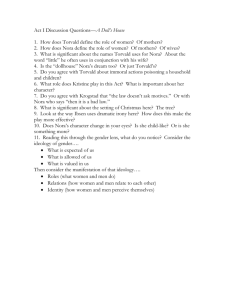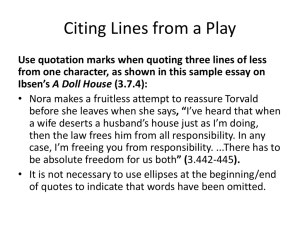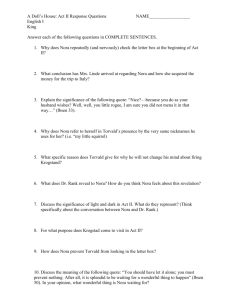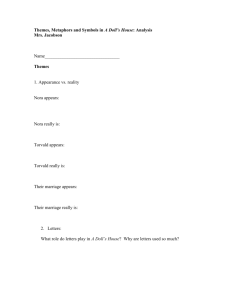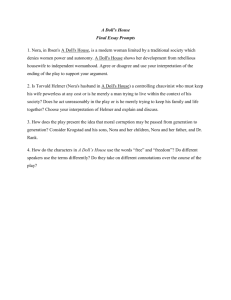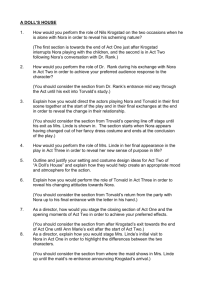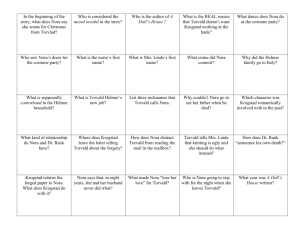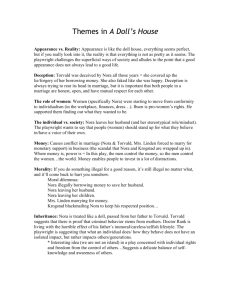Be a Scholar: A Doll*s House
advertisement
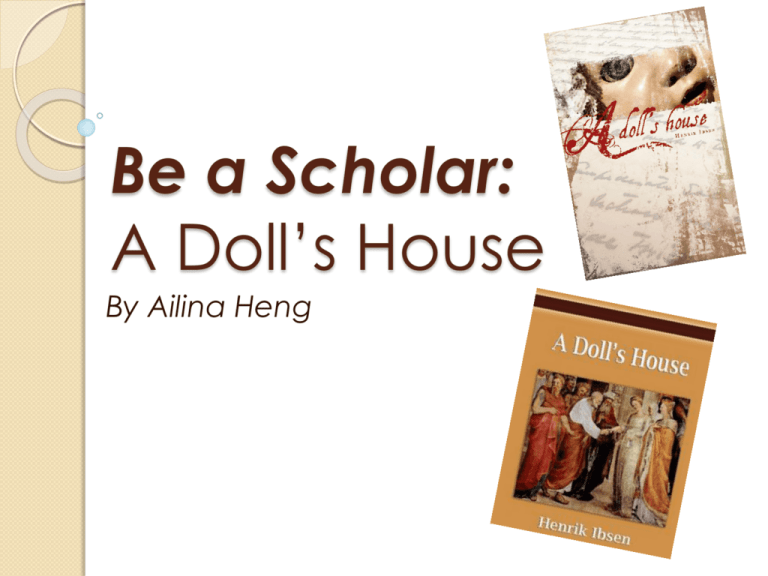
Be a Scholar: A Doll’s House By Ailina Heng Henrik Ibsen Born March 20, 1828 in Skien, Norway ◦ Father was a merchant; mother was an artist ◦ Poverty struck family farm life Ibsen discovered more about literature Age 15, Ibsen went to work in an apothecary ◦ Wrote Catilina, first play Late 1850, met Ole Bull Norwegian Theatre in Bergen In 1868, Ibsen went to Germany and saw first social drama which inspired A Doll’s House After exiled from Norway, most of his work became popular Returned to Norway as a literary hero ◦ Died on May 23, 1906 Historical Information The role of women began to rise. ◦ 1882 Married Women’s Property Act ◦ Education Act Charles Darwin published, “The Descent Man” Oxford began allowing female students into the university Themes Role of Women ◦ Self-sacrificial Nora sacrifices children in order to find her true identity ◦ Not allowed to handle money, conduct business within society, get educated, isolated in marriages Appearance vs. Reality ◦ The appearance of characters do not match the realities of who they are. ◦ Ex: Torvald appears loving and caring but is selfish and cares more for reputation Morality ◦ Society’s morality versus true morality ◦ Ex: Nora forging her husband’s signature Motifs Letters reveal secrets ◦ Ex: Nora borrowing loan Money demonstrates power ◦ Torvald gaining a job with money Inheritance science and values ◦ Dr. Rank and tuberculosis ◦ Nora and Torvald and their children Significant Characters Nora Helmer Protagonist Torvald Helmer Partly antagonistic Krogstad Antagonist Christine Linde Confidante Dr. Rank portrays themes Style Realism ◦ Definition: a manner of treating subject matter that presents a careful description of everyday life, usually of the lower and middle classes ◦ Characterizes colloquial, everyday speech ◦ Realism vs. Naturalism Realism provides some unrealistic events Ex: door bell ringing at the perfect time, people entering and exiting when necessary Symbolism Holidays Christmas and New Year’s ◦ Symbolizes rebirth and renewal ◦ Ex: Nora realizing to find her identity, Krogstad developing into a generous character Christmas Tree ◦ Symbolizes Nora as a character ◦ Nora is ornamental as the Christmas tree ◦ Act Two demonstrates a burnt down tree Conflicts Man vs. Man ◦ Nora vs. Krogstad ◦ Krogstad vs. Torvald ◦ Torvald vs. Nora Man vs. Society ◦ Nora vs. Woman’s Role in Society Man vs. Self ◦ Nora vs. Inner self

